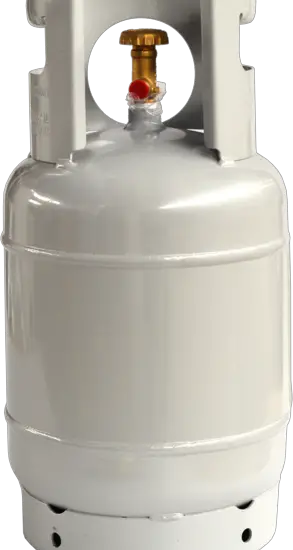Ever had a moment to think about R502 refrigerant? This seemingly nondescript compound has been a staple in refrigeration systems for years. Let’s unravel the story behind R502, its properties, usage, environmental impact, and finally, the alternatives that have emerged in its place.

Table of Contents
Understanding R502 Refrigerant
You might think of R502 as the lifeblood of many cooling systems. Comprised of two key components—chlorodifluoromethane and chloropentafluoroethane—this refrigerant was the go-to choice for low-temperature applications.
Definition and Basic Properties
So, what exactly is R502? Well, it’s a blend of CFC and HCFC refrigerants—chemicals known for their remarkable cooling abilities. But it’s not all sunshine and roses with R502, as we’ll find out soon.
Chemical Composition
The stuff that makes R502 tick includes a healthy mix of chlorodifluoromethane (HCFC-22) and chloropentafluoroethane (CFC-115). This potent combo gives R502 its refrigerating prowess.
Physical Properties
R502 has some cool physical properties (no pun intended). It’s colorless, non-flammable, and has a fairly low boiling point, which makes it perfect for freezing applications.
Safety Considerations
Although R502 is non-toxic and non-flammable, it’s not exactly your best buddy. When exposed to fire, it can decompose into harmful substances. And let’s not forget about its environmental impact!
Common Applications of R502
R502 was often the refrigerant of choice in commercial refrigeration and air conditioning systems, particularly for freezers and transport refrigeration.
For more articles on refrigerants, click here: Articles on Refrigerants: The Ultimate Guide to Understanding Them
Environmental Impact of R502
The environmental footprint of R502 is nothing short of a Shakespearean tragedy. Its significant ozone depletion and global warming potential have cast a dark shadow over its previously glowing reputation.
Ozone Depletion Potential (ODP)
Got a thing for blue skies? Me too. Unfortunately, R502’s high chlorine content had a nasty habit of damaging our beloved ozone layer.
Global Warming Potential (GWP)
When it comes to global warming, R502 is no innocent bystander. Its high Global Warming Potential means it can contribute significantly to climate change. Bummer, right?
The Phasing Out of R502 Refrigerant
Thankfully, the world said ‘enough is enough’, and R502 started being phased out through international treaties like the Montreal Protocol.
International Regulations and Treaties
The Montreal Protocol, a real game-changer in the world of refrigerants, marked the beginning of the end for R502. Countries worldwide pledged to phase out ozone-depleting substances, including our ‘friend’ R502.
Implications for Existing R502 Systems
With R502 being shown the door, what does it mean for systems that still use it? Well, they have to transition to alternatives. Sounds like a challenge, but it’s a necessary one for Mother Earth.
Alternatives to R502 Refrigerant
With R502 out of the picture, what’s filling the void? Let’s check out the new kids on the refrigerant block.
Overview of R502 Alternatives
A slew of alternatives has emerged to replace R502 in different applications, each bringing their unique properties to the table.
Hydrofluorocarbons (HFCs)
Enter Hydrofluorocarbons (HFCs), the new sheriffs in town. They have zero ozone depletion potential, making them a much friendlier choice for our planet.
Hydrofluoroolefins (HFOs)
Then there are Hydrofluoroolefins (HFOs). These fellas have a negligible global warming potential. So, another win for the environment!
Natural Refrigerants
Natural refrigerants like ammonia, carbon dioxide, and hydrocarbons have also entered the ring, each offering unique benefits.
Transitioning to Alternatives
Moving from R502 to its alternatives isn’t a walk in the park, but it’s a crucial step in protecting our planet. It involves retrofitting existing systems or, in some cases, complete system replacement.
Conclusion
The story of R502 is a tale of rise and fall. Once hailed as a refrigeration marvel, its environmental impact has led to its phase-out. Today, safer and more environmentally-friendly alternatives have taken its place. So, what does the future look like without R502? Brighter, cooler, and definitely more sustainable.
The Future without R502
Without R502, the refrigeration and air conditioning landscape is changing for the better. We’re seeing the rise of alternatives that respect Mother Earth while delivering the cooling power we need.
Key Takeaways
To sum it up, R502 had its heyday, but its environmental impact was a deal-breaker. Now, we’re embracing alternatives that don’t harm our planet. And that’s a change we can all chill with.